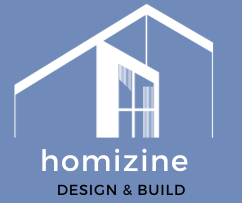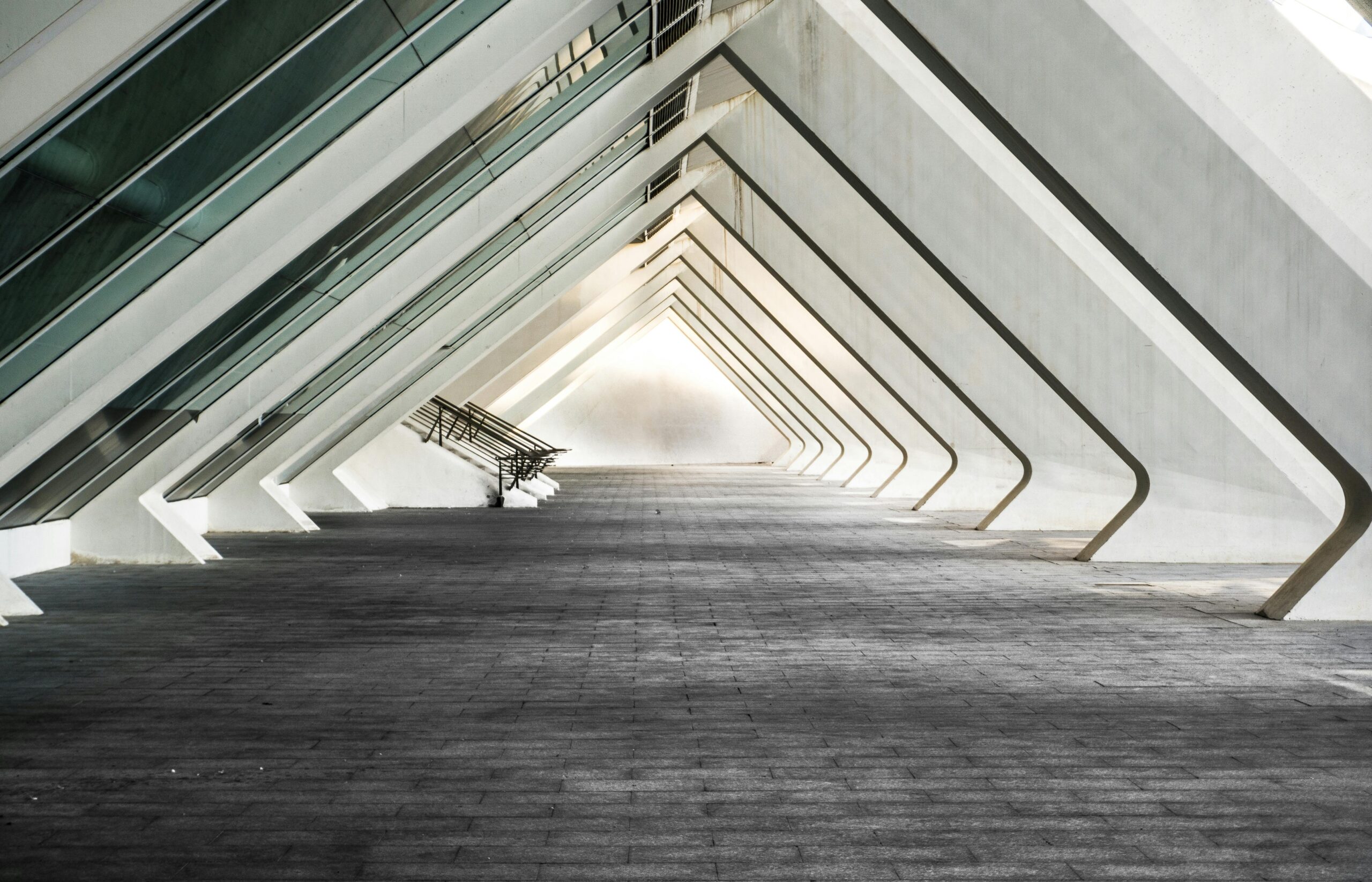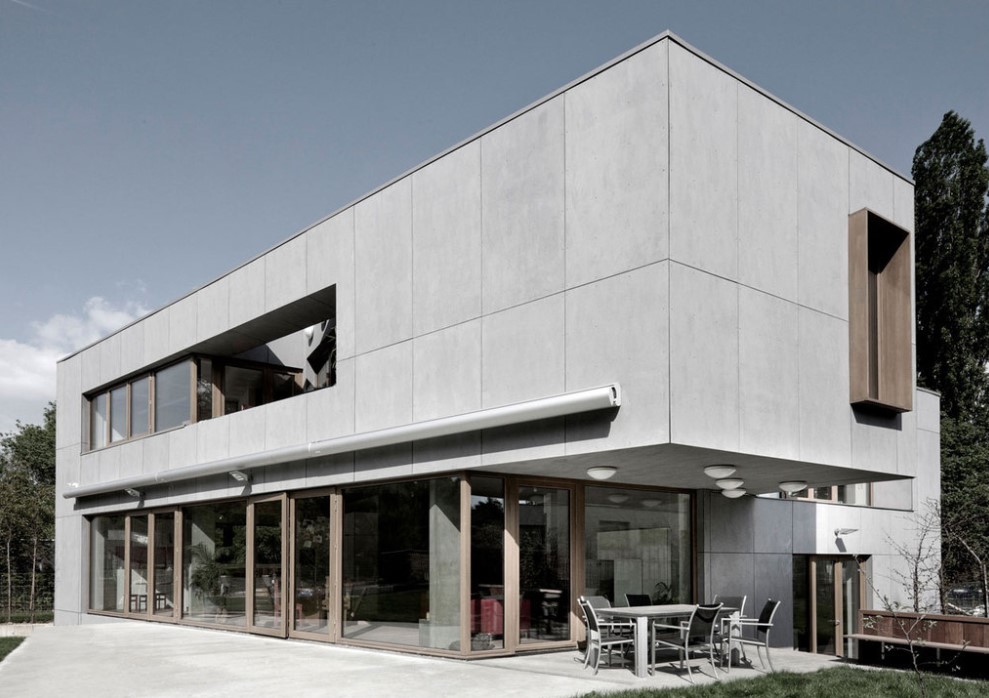Modern Building Façade design-2024 facades are crucial elements of architectural design, defining the aesthetic appeal, functionality, and environmental performance of structures. They come in various types, each serving specific purposes and reflecting different design philosophies. Let’s explore some of the most common type.
Modern Building Facade design-2024
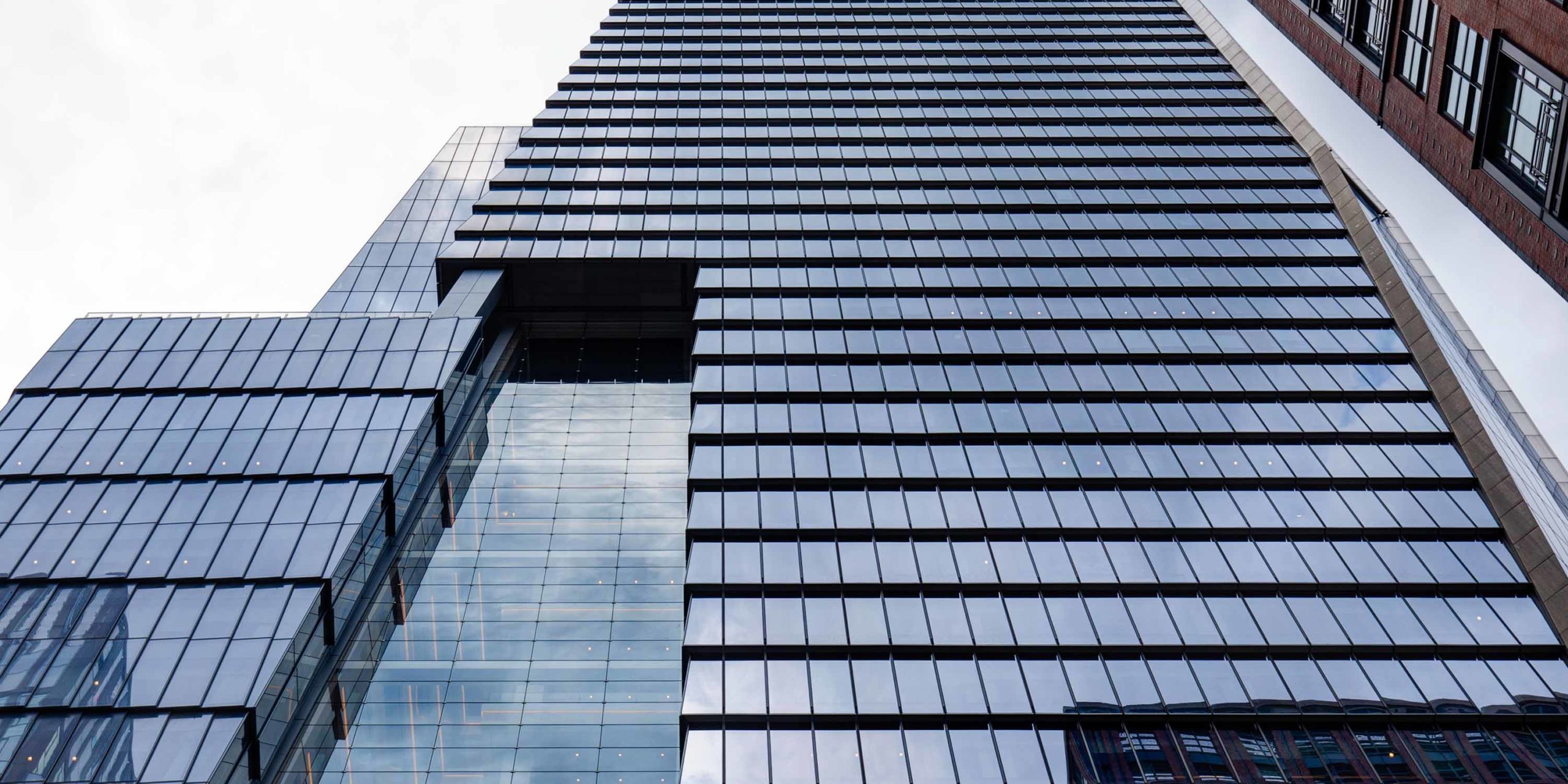
Curtain Wall Facades :
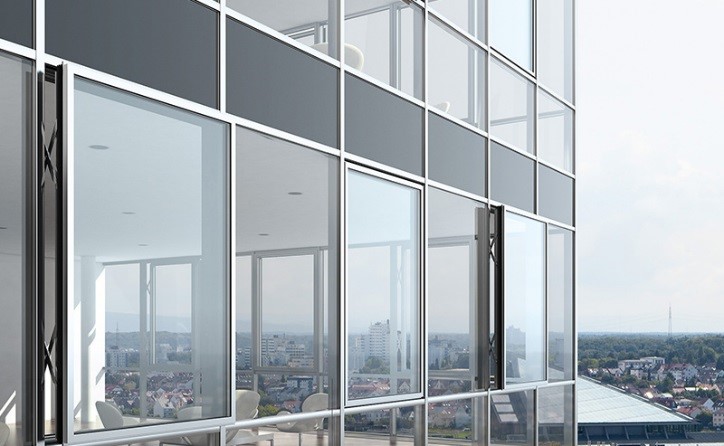
- Curtain wall facades are non-structural, lightweight cladding systems typically made of glass, metal, or composite materials.
- They provide an uninterrupted, transparent exterior that maximizes natural light penetration and offers panoramic views.
- Curtain walls are common in contemporary skyscrapers and high-rise buildings, showcasing modern architectural aesthetics.
Brick Facades :

- Brick facades have a timeless appeal and are characterized by their durability, texture, and warmth.
- They can feature various patterns, bond types, and mortar finishes, allowing for diverse design expressions.
- Brick facades are prevalent in both historic buildings and contemporary structures, adding character and visual interest to urban landscapes.
Advantages: Classic aesthetic, highly durable, fire-resistant, and provides good insulation.
Disadvantages: Heavier, which may require a more robust structural support, and can be costly depending on brick quality and installation.
Best for: Temperate climates; for homeowners seeking a traditional or timeless look with low maintenance.
Stone Facades (Limestone, Granite, Slate) :

- Stone facades exude elegance and sophistication, often associated with luxury and prestige.
- They can be crafted from natural stone such as granite, limestone, marble, or engineered stone materials.
- Stone facades are prized for their durability, weather resistance, and timeless aesthetic, making them a popular choice for institutional, commercial, and residential buildings.
Advantages: Luxurious appearance, extremely durable, fire-resistant, and provides excellent insulation.
Disadvantages: Expensive and heavy, requiring a solid structural base, and can be costly to install.
Best for: High-end homes or as an accent in a façade, particularly in areas where a natural, rugged look is desirable.
Glass Facades :

Natural Glass: 4 Ways it is Transforming Spaces with Innovative Designs
- Glass facades epitomize modernity, transparency, and minimalist design principles.
- They consist of large expanses of glass panels supported by structural elements such as steel frames or glass fins.
-
- Glass facades promote daylighting, connectivity with the surrounding environment, and visual openness, creating sleek and contemporary building exteriors.
Glass façades have become increasingly popular in both commercial and residential architecture for a variety of reasons. Here are some of the key advantages of using glass façades in these settings:
Natural Light and Energy Efficiency
- Benefits: Glass façades allow natural light to flood interior spaces, reducing the need for artificial lighting during the day. This can significantly cut energy costs and promote a more comfortable, well-lit environment.
- Energy Efficiency: Modern glass façades often incorporate insulated glazing, low-emissivity (Low-E) coatings, and other technologies that minimize heat transfer. These features help maintain indoor temperatures and improve overall energy efficiency, reducing heating and cooling costs.
- Best For: Commercial buildings benefit from the reduced need for artificial lighting, while residential settings enjoy an open, airy atmosphere that feels more connected to the outdoors.
Aesthetic Appeal and Modern Look
- Benefits: Glass façades create a sleek, sophisticated look that is often associated with modern and contemporary design. They offer a visually appealing, minimalist aesthetic that can make buildings appear more spacious and open.
- Versatility: Glass can be customized in terms of color, tint, and reflectivity, allowing architects to achieve various styles and effects. Glass façades are also versatile enough to be used alongside other materials, such as metal or stone, to create unique designs.
- Best For: Businesses and residents who value a modern, high-end aesthetic, as well as projects aiming to achieve a seamless connection between indoor and outdoor spaces.
Visual Connection to the Outdoors
- Benefits: Glass façades offer unobstructed views of the surrounding environment, creating a strong connection between indoor and outdoor spaces. This enhances the visual experience for occupants and can even improve mental well-being by bringing natural scenery indoors.
- Psychological Impact: Access to outdoor views has been shown to reduce stress and increase productivity, making glass façades especially desirable in office buildings and commercial settings. In residential settings, it helps create a feeling of openness and serenity.
- Best For: Buildings in scenic areas or urban environments where views are a valuable asset; it’s also beneficial in creating a more relaxed, calming atmosphere in both residential and commercial spaces.
Flexible Design and Customization
- Benefits: Glass is highly customizable, available in a wide range of styles, textures, and tints. For example, tinted glass can reduce glare, while frosted or etched glass offers privacy without sacrificing light.
- Technological Options: Modern glass façades can include advanced technologies such as switchable (smart) glass, which changes opacity at the touch of a button, or photovoltaic glass, which can generate solar power.
- Best For: Residential projects where privacy is a concern, and commercial settings that want to integrate sustainable technology solutions or showcase modern design elements.
Environmental and Sustainability Benefits
- Energy Savings: As mentioned, modern glass façades can include multiple layers, coatings, or treatments that improve their insulating properties. These features can result in significant energy savings over time.
- Recyclability: Glass is a recyclable material, making it an environmentally friendly choice. Many manufacturers also use recycled materials in their glass products, contributing to a more sustainable construction process.
- Best For: Sustainable projects or buildings aiming to meet certain green building certifications, such as LEED or BREEAM, where energy efficiency and environmental impact are key considerations.
Improved Building Performance and Climate Control
- Weather Protection: With advanced glazing and treatments, glass façades can provide good weather resistance, protecting the interior from wind, rain, and other elements.
- UV Protection: Many modern glass options can block harmful UV rays, protecting furniture, flooring, and other interior elements from fading.
- Best For: Both residential and commercial spaces where protection from the elements and interior comfort are priorities.
Enhanced Property Value and Curb Appeal
- Commercial Appeal: A well-designed glass façade can make commercial buildings appear more professional and inviting. It can enhance a business’s image by projecting a sense of modernity and openness, which can be attractive to tenants, employees, and customers alike.
- Residential Impact: Glass façades can add significant value to residential properties, as they are often perceived as a premium feature. They can help make homes stand out in the real estate market, especially in areas with scenic views.
- Best For: Residential projects aiming to create a luxury appeal and commercial buildings looking to attract high-end tenants or clients.
Low Maintenance and Durability
- Easy Cleaning: Glass façades, especially when treated with coatings that repel dirt and water, are relatively easy to maintain. Commercial glass cleaning services can keep them looking clear and new.
- Durability: High-quality, tempered, or laminated glass is strong and resistant to impact, weather, and other potential damage. While initial costs may be higher, glass façades can last a long time with minimal maintenance, making them a durable investment.
- Best For: Busy commercial buildings where minimal maintenance is desired, and residential buildings looking for a long-lasting, low-maintenance exterior option.
Challenges to Consider
- Privacy: Glass façades in residential buildings can lead to privacy concerns, although tinted, frosted, or patterned glass can help mitigate this.
- Glare and Heat: Depending on orientation and design, glass façades can create glare and cause heat buildup. Advanced glazing, shading devices, and other treatments are often used to address these issues.
- Cost: Glass façades can be more expensive than some traditional materials, especially when using advanced glazing technologies. However, they often provide long-term savings through reduced energy costs and increased property value.
In summary, glass façades are highly beneficial for both commercial and residential buildings due to their ability to enhance aesthetics, improve energy efficiency, offer flexible design options, and connect indoor spaces with the outdoors. While there are considerations for privacy, cost, and climate control, these can typically be addressed with modern glass technologies, making glass façades a popular and effective choice for a variety of settings.
Advantages: Maximizes natural light, enhances views, creates a sleek, modern look, and can contribute to energy efficiency with the right glazing.
Disadvantages: Less privacy, requires frequent cleaning, higher initial cost, and can contribute to heat gain/loss if not treated or insulated properly.
Best for: Urban settings or areas with scenic views where maximizing natural light is desired.
Metal Panel Facades (Aluminum, Steel, Corten):
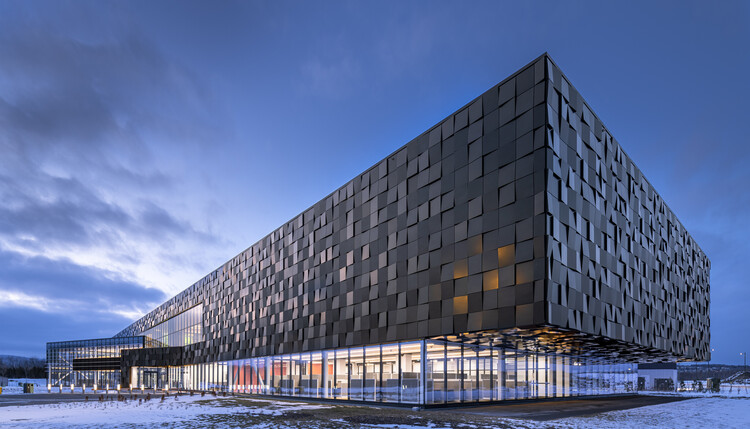
https://www.archdaily.com/990671/angled-metal-panels-for-modular-creative-and-sustainable-facades
-
- Metal panel facades offer versatility, durability, and a sleek, industrial aesthetic.
- They can be fabricated from aluminum, steel, zinc, copper, or composite materials, allowing for a wide range of colors, textures, and finishes.
- Metal panel facades are lightweight, easy to install, and customizable, making them suitable for various architectural styles and applications.
- Advantages: Very durable, low-maintenance, fire-resistant, recyclable, and available in a variety of finishes and colors.
- Disadvantages: Can be costly, prone to denting, and in hot climates, can absorb heat, raising cooling costs if not insulated.
- Best for: Industrial or ultra-modern designs, and homes in regions with heavy rain or snow, as metal is resilient against these elements.
Terracotta Facades :
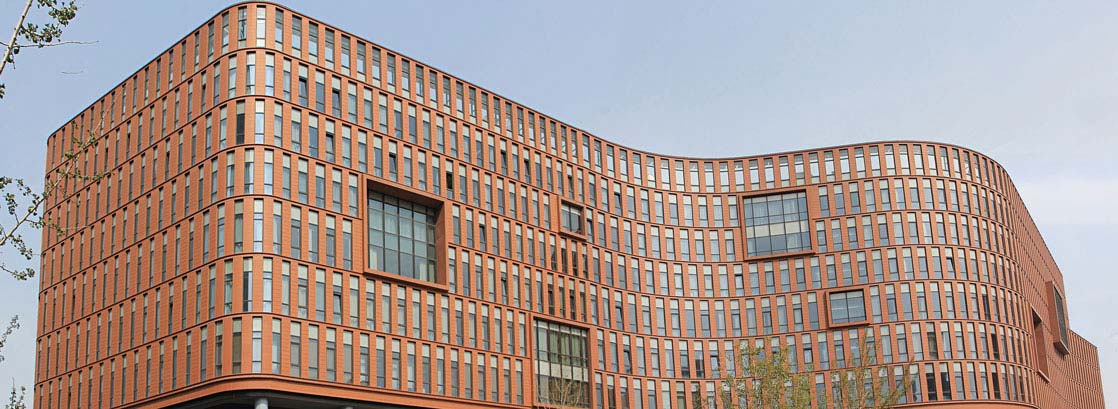
-
- Terracotta facades blend traditional craftsmanship with modern architectural innovation.
- They feature clay-based ceramic tiles or panels that are durable, weather-resistant, and environmentally friendly.
- Terracotta facades offer a rich palette of colors, textures, and glazing options, enhancing visual interest and cultural significance in building design.
Fiber Cement Facades :
- Fiber cement facades combine the durability of cement
- with the flexibility of reinforced fibers such as cellulose or fiberglass.
- They are resistant to moisture, fire, and pests, making them ideal for exterior cladding in diverse climates.
- Fiber cement facades come in various textures and profiles, including smooth, wood-grain, and textured finishes, offering architects and designers creative freedom in façade design.
Stucco :
- Advantages: Cost-effective, customizable, weather-resistant, and provides a seamless look.
- Disadvantages: Prone to cracking, especially in areas with extreme temperature changes, and requires maintenance.
- Best for: Dry, warm climates, as stucco can be prone to moisture damage in wetter areas.
Composite Panels
- Advantages: Lightweight, customizable, available in many textures and colors, and can mimic more expensive materials like wood or stone.
- Disadvantages: Variable durability depending on the quality, and some composites may degrade over time in harsh weather conditions.
- Best for: Modern designs where versatility and cost-effectiveness are important.
High-Pressure Laminate (HPL) Panels
- Advantages: Extremely durable, scratch-resistant, UV-resistant, and available in a wide variety of colors and patterns.
- Disadvantages: Cost can be high, especially for premium finishes, and may not be as widely available as other materials.
- Best for: Contemporary designs in areas with intense sunlight or high traffic, as HPL is very resistant to wear.
Modern Building Façade design-2024
These are just a few examples of the diverse range of building facades found in contemporary architecture. Whether embracing tradition or pushing the boundaries of innovation, each type of facade contributes to the visual identity, functionality, and sustainability of the built environment, reflecting the evolving aspirations and values of society.
Modern Building Façade design-2024
Selecting the Right Material for Modern Building Façade design-2024
The ideal material depends on the specific requirements of the project:
- Sustainability: Wood, fiber cement, and composite panels are good choices.
- Low Maintenance: Fiber cement, metal, or HPL panels work well.
- Cost-Effective: Stucco, fiber cement, or basic composite panels offer value for money.
- Aesthetic Flexibility: Glass, composite panels, and HPL provide the widest range of colors and textures.
The best choice will strike a balance between aesthetics, performance, and budget, aligned with the specific needs of the home’s location and design.
FAQs.
Q. What is the best material Used in modern residential building façade ?
The best material for a modern residential building façade depends on several factors, such as climate, aesthetic preferences, budget, and maintenance requirements. ACP, HPL, Metal jaali , Stone and bricks are some popular Material used in façade.
Q. How Glass façade is good for commercial and residential Façade ?
Glass façades have become increasingly popular in both commercial and residential architecture for a variety of reasons. Glass façades allow natural light to flood interior spaces, reducing the need for artificial lighting during the day. This can significantly cut energy costs and promote a more comfortable, well-lit environment.
Q. How Cement fiber panels are useful in building façade ?
Fiber cement panels are a practical, attractive, and durable solution for building façades, offering a range of benefits that enhance both functionality and aesthetics. They provide:
- Durability in diverse weather conditions,
- Fire and pest resistance,
- Versatile design options that suit various architectural styles,
- Low maintenance for long-term value,
- Energy efficiency through better insulation, and
- Cost-effectiveness with high return on investment.
Due to these qualities, fiber cement panels are an excellent choice for both residential and commercial projects, especially for property owners and developers seeking a durable, sustainable, and visually appealing façade solution.
Q. What is curtain wall in building façade ?
A curtain wall is a non-structural outer covering for a building, typically made of lightweight materials, most commonly glass, metal, or composite panels. Unlike traditional walls, a curtain wall doesn’t carry any structural load; instead, it is attached to the building’s frame and primarily functions as a barrier to protect the interior from external weather conditions while enhancing aesthetics.
